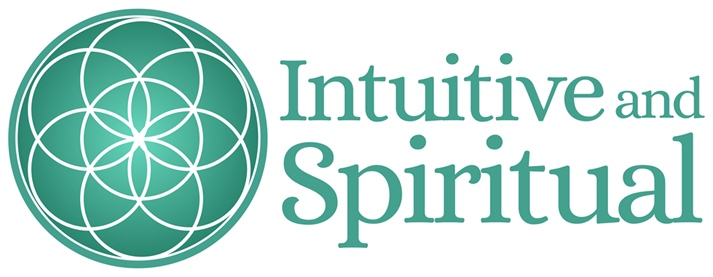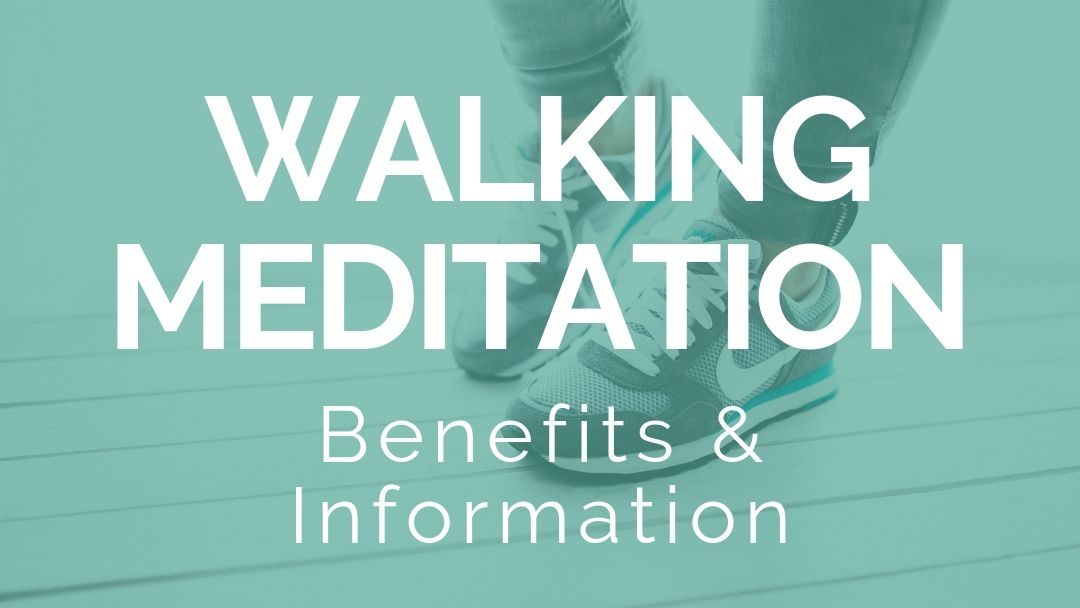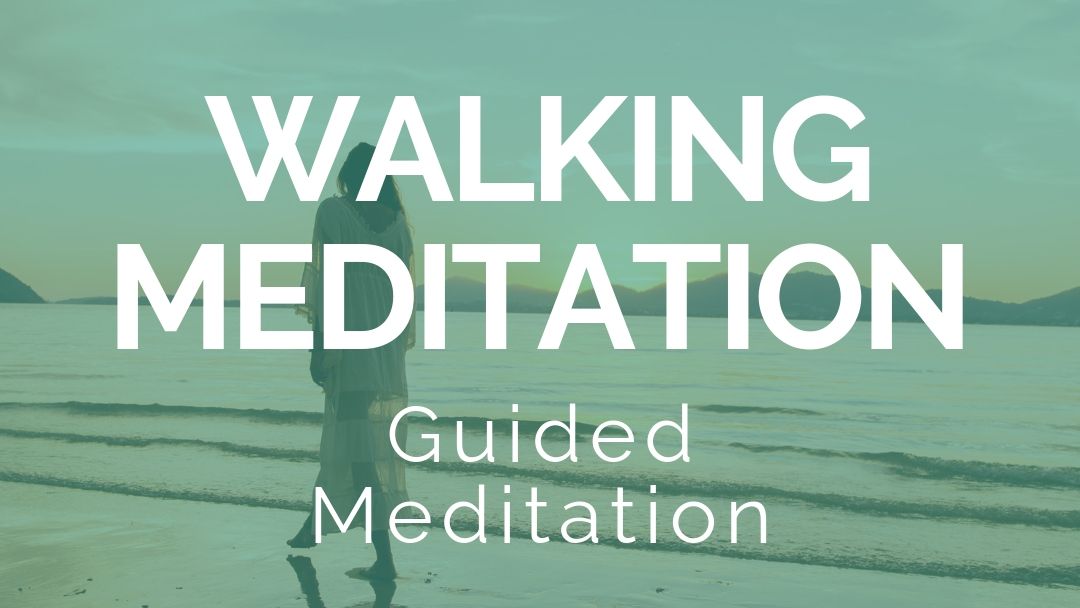Walking meditation
You’re already familiar with a number of different types of meditations, their effects, and their benefits. Walking meditation still offers those same meditative benefits, but has a few additional bonuses. I’ve created a video that goes over these benefits and information if you prefer that:
Key benefits
Body movement
It can be a great alternative to sitting meditation for those who find it difficult to sit still. It can also shift your focus to the movement of your body, encouraging mindful living not only in walking, but in other areas of your life. It is known for its stress-reduction capabilities.
Get your blood flowing
Walking and movement also get your blood flowing. It connects you with the outdoors, even if you’re in the city with all its sights and sounds. It helps connect you to the earth, and to your surroundings. It can be a shared experience with others, though if you are with others, if it is a meditation, then each person is walking in silence, striving to be completely present.
Mind and body connection
Another remarkable thing about walking meditation is that it encourages a connection with the body. Many of us only tune into our bodies when it’s signaling that it’s in pain. Conversely, walking meditation encourages focus on the moving parts of the body, making you aware of all the parts and inner workings that make movement possible. It fosters a connection between mind, body and spirit as a result.
You learn to slow down
A practice of walking meditation also teaches you how to slow down. So often, as we go about our day alternating between walking and sitting, we’re not in a mindful state. Often, we’re rushing around, or focused on “getting things done.” Our breathing is fast and shallow, and our minds are running at a hundred miles an hour.
Walking with an intention to meditate teaches the body to breathe and pause, giving it time to take in more oxygen (stimulating relaxation) and, over time, to do this all the time – even when you’re rushed.
Walking meditation in practice
Just recently, I was in the airport with hardly any time between flights and I found myself running to get to the next gate in time for my next flight. As I was jogging through the concourses, two things came to me: to mindfully breathe, but also to be mindful that next time I book a flight, to make sure there’s a bit more layover time so that I’m not so rushed and running through crowds of people!
When to try it
One other neat thing about walking meditation is that it can be done anytime you actually take a step! Or, if you’re unable to walk, such as being in a wheelchair, anytime you’re on the move.
When you do a walking meditation, pre-determine where you’ll go, about how long, and set an intention that it will be a meditation. This will help you so that you don’t have to interrupt your meditation thinking about where you go or for how long.
Where to go for your walk
You can walk indoors or out, back and forth or in a circle, or even in a labyrinth. You can hike on a trail, or walk on the sidewalk. You can do this in the grocery store or walking across a parking lot to get to your car.
There are advantages and disadvantages to each: walking in the city affords you sidewalks, or at least close proximity to walkable places, usually. Walking in nature gets you more connected to the earth, which, in itself, can be powerful and healing. The outdoors offers a vast expanse of trails from which you can choose, and very often, a good dose of silence.
The more you incorporate this into your life, the easier gets. It will also lend itself to being more mindful, more of the time, which will help keep you calmer and in the present moment.
Set an intention for your meditation
As you begin the practice of walking meditation, be sure that you set the intention to meditate. Try not to think about all the things you usually think about as you walk – your work, any issues you have going on, a problem you’re trying to solve. Instead, focus on the movement of your body, your breathing, your surroundings.
You can do this meditation while walking a pet, but be aware that if it is difficult to control your pet or if you are constantly having to manage the leash, it might be best to do this meditation separately from walking your pet. Be sure to wear comfortable clothing, good shoes, and walk where you know you will be safe.
Thoughts are okay
As you walk, your focus will wander. Know that it’s okay to have thoughts. Welcome them. Meditation of any kind shouldn’t be a strain. Don’t try too hard. Just bring your gentle, nonjudgmental attention back to your meditation focus – walking and breathing – when you find your thoughts have taken you on a tangent.
This practice can be a bit challenging when you first try it. After all, you’ve probably spent your life NOT walking with the intent to meditate, and focusing on the breath and movement of the body. The best thing you can do is start slowly, and be kind to yourself. Listen to the guided meditation to get you started. When you practice on your own, start out with a few minutes at a time, working up to longer periods of time slowly.
Walking Meditation Script + Video
If you have not watched the video (or read the info above) on the benefits of a walking meditation, please do so before going through this guided meditation. It will help put this practice into context and give you information about what is happening with your body and your focus. If you are in a wheelchair or using a similar device, you can substitute the part of the body that creates movement each time I mention the word, “foot” or “feet.” Thus, if I am speaking about the right foot, and you use your right arm to move, bring your focus to the right arm.
Let go of any expectations. You have set this time aside for your practice. Let yourself settle in to benefit from this time of calm. Be sure that once you begin, stick with it until the end.
Thoughts are okay in meditation. Allow them to come into your awareness with gentleness and non-judgment. Allow yourself to feel whatever you need to feel, with non-judgment. When you become aware that you have drifted from the focus of this meditation – the movement of the body and the breath – come back to your focus.
Beginning the meditation
Standing with your feet hip-width apart, and hands at your sides, begin to take three deep breaths.
Now, take two or three deep yawns. You can “fake yawn” until a one comes on. Take your time in allowing yourself to a couple yawns.
Breathe…into your lungs. Relax the muscles in the head and face.
Bring your awareness down to the shoulders and back, relaxing them.
Bring your awareness to the chest and abdomen, relaxing each area.
Move to your legs and feet, sending them loving, relaxed energy.
Bring your awareness to the feet. With your shoes on, and feet still, allow yourself to feel the earth beneath you – its energy, it’s power, its stability. Imagine this energy coming up into your body, powering you and giving you strength.
If you’d like, use your hands to “move the air up from the earth” to send even more energy to the upper parts of the body. Do so with deliberate, and yet slow movements.
Begin to walk and meditate
When you feel ready, begin to take your first step. Keep these next few steps slow and steady. As you do so, become aware of the feel of your feet upon the surface where you’re walking.
Notice the movement of your feet and legs as you put one foot in front of the other.
Remain aware of the in and out motion of the breath.
Move your focus to the right foot. Notice what it feels like as you push off with the toes, swing the foot forward, and then make contact with the heel of the right foot.
Notice how you transfer your weight easily from the back to the front of the foot.
Don’t try too hard to focus, just let yourself feel the sensations. Anything and everything your experience is all right.
Now bring your awareness to the left foot. Notice the feeling you have when you push off with the toes, swing the leg forward, and make contact with your heel.
Notice the transfer of weight from the back of the foot to the front. And then to your other foot.
Continue this way for a minute or two.
Awareness of the body
Remember, it’s okay to have thoughts. When you become aware that you have followed your thoughts, gently bring yourself to the focus of this practice: to the movement of walking, and to the breath.
Bring your awareness to your lower legs. Feel your calf and shin muscles working to propel the body forward with each step.
Bring your awareness to the thighs and their role in moving your body forward.
Bring your awareness to the lower back and the muscles required to hold you upright and help you to move forward.
Now, move your awareness to the abdomen and torso. Feel the muscles moving as your body moves.
Notice the swinging of each arm as you walk.
Notice your shoulders and upper back as you move. Become aware of all the muscles required to hold you upright and move forward.
Bring awareness to your neck and the muscles that hold your head.
Notice the muscles in your face and all the little muscles to help you see, smell, and even taste the air and surroundings.
Bring your awareness to the sounds around you. Perhaps you’re in a forest. Maybe you’re in the middle of the city or town where you live. Maybe you’re at home, walking through hallways and rooms.
What sounds do you hear? Just become aware of them. You don’t need to figure out what they are or label them.
Notice the breath. Become aware of the natural rhythm of your breathing.
When your thoughts take you on a tangent, come back to the breath and the movement of your body.
Continue walking. Be kind to yourself and let go of any expectations. Just come back to the breath. Come back to the movement of your body.
Continue this practice for a few more minutes in silence.
Ending the meditation
Bring your awareness to your breath. Allow yourself to feel the in and out rhythm of the rise and fall of your chest.
Stop walking. Let yourself feel gratitude for your body and this time that you spent mindfully and meditatively walking.
In closing, I’d like to share a haiku with you:




Every single day, Lil Sis, rain or shine, walking down a country road, me and my dog. I guess I do meditate, although I never really thought about it in that way. My mind tends to slow down…my creativity seems to flow easily…and I’m much more relaxed during that time.
In the old days it was mountain-climbing and high-country hiking…now it’s a country road. We do what we can, you know.
Hugs coming your way, my talented sibling.
Big Bro,
I’d say you’re a natural meditator. Someone who is naturally calm, and yet loves to do lots of things. That’s like me. 🙂 I mean…the lots of things part. Hehe. I’m naturally an anxious person, and so meditation calms me way down. And walking. Walking calms me way down, too.
Mountain climbing and high-county hiking? I totally see it.Country roads aren’t a bad swap. Thank you so much for your kind words. I’m sending you big hugs across The Great Divide. 🙂
I absolutely love this and my husband and I have been walking every night after dinner. Granted we talk to each. So might not be totally meditating. But still I agree walking and clearing one’s thoughts is definitely a big plus in my book. So, thanks for sharing and now wishing you a wonderful week ahead. Hugs!! ❤️
Sweet Janine – thank you for your comment. I love, love, love that you all go walking after dinner. I’m sure you get lots of things worked out – walking is great for that. Walking and clearing the mind ARE a big plus. Hehe. I’m wishing you a wonderful week and have fun taking all those steps! 🙂
You know me Cynthia.. I LOVE walking, and being mindful in the peace and quiet, observing and breathing deep.. 🙂 So, so beneficial ..
Gardening, weeding, planting, pruning, watching birds, insects, the sky.. all of this to me is my daily meditation..
Sweeping the mind clear, uncluttered your thoughts. Just allowing your senses to take in the sights and sounds of nature.
just wonderful..
LOVED this post.. But you knew I would..
And of course hugging a tree or two en-route is for me a must LOL
Love your way dear friend..
Enjoy your creative time and quiet spaces..
Dear Cynthia,
Walking meditation is my cup of tea – one of the only ways I am able to step away from thoughts of routine, necessity or the “to do” list. Walking with one of my fur kids is even better. I love to mirror their curiosity and awe over the “tiny but mighty” adventures in nature.
Thinking of you and sending my love and lots of gentle hugs, Maria
Sweet Maria, I was thinking of you when I wrote this post. I had a feeling it would resonate because I know with your fur kids, they would love to go on walks, too. 🙂 Thank you for your sweet comments, love, and gentle hugs. I feel their power. 💜